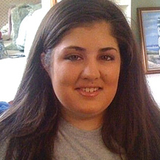ECMO Treatment: Katelyn's Story
ECMO Treatment: Katelyn's Story
On May 8, 1990, Katelyn became the first baby at Children’s Hospital to benefit from Extracorporeal Membrane Oxygenation (ECMO), a machine that essentially does the work of the heart and lungs when the baby’s own are failing.
Since then, ECMO has helped improve the care of hundreds of gravely ill newborns.
A group of surgeons, doctors and nurses hovered around Katelyn Farrell, a day-old newborn who was barely clinging to life, working quickly to hook her up to the contraption they hoped would save her.
As the girl’s condition worsened, the lead surgeon made the final connections and switched on the machine.
A great cheer went up as Katelyn’s skin went from sickly purple to healthy pink. Katelyn was out of immediate danger and the ECMO program at CHOP had officially begun.
ECMO helps baby's heart and lungs

On May 8, 1990, Katelyn became the first baby at Children’s Hospital to benefit from Extracorporeal Membrane Oxygenation (ECMO), a machine that essentially does the work of the heart and lungs when the baby’s own are failing. It is one of the key technologies that has helped improve the care of gravely ill newborns over the past 20 years.
“What is that? What are they doing?” Michele Rupert wondered when she first saw her little girl amid a frightening network of tubes and wires, surrounded by doctors and machinery. But Michele trusted that her baby was in good hands.
At the time, ECMO was a relatively new therapy; it had only been approved at CHOP a month before Katelyn’s arrival.
Today, nearly 1,000 children have received ECMO at CHOP — about 50 each year — making it one of the most active programs in the country.
Still offering hope through ECMO

For many babies like Katelyn, who was rushed to CHOP within hours of birth for surgery to correct a congenital defect, ECMO is the last hope for survival. It isn’t a cure but a temporary measure to bypass the heart and lungs, allowing them to rest, recover and strengthen.
It worked for Katelyn. Within a couple of days, she had stabilized enough to be taken off ECMO, and she went home within a month. Michele remembers it as the most stressful time of her life, but today her daughter shrugs it off.
Though Katelyn remembers nothing of her ordeal, she has embarked on a career helping children too, working in daycare while she earns a teaching degree.
“She’s amazing now, a typical 21-year-old,” says her mom.
Originally posted: June 2012